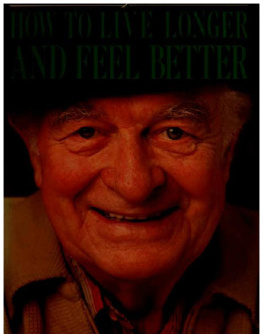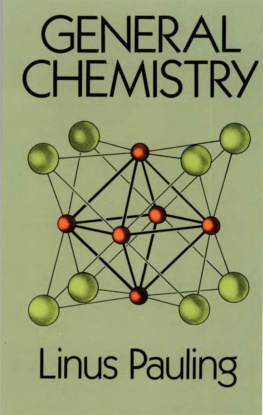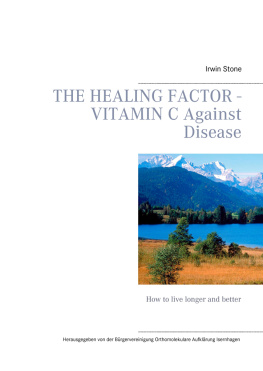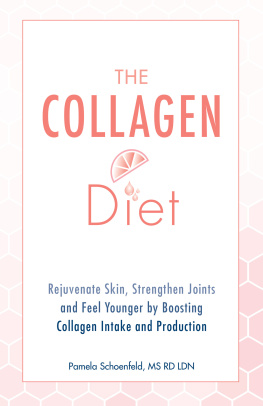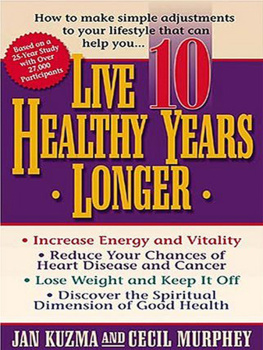Illustrations on pages 68, 70, and 71 by George Kelvin.
Drawings on pages 6, 40, 105, 235, and 264 by Sidney Harris.
Library of Congress Cataloging-in-Publication Data
Pauling, Linus, 1901
How to live longer and feel better.
Bibliography: p.
Includes index.
1. Nutrition. 2. Vitamins in human nutrition.
3. Orthomolecular therapy. 4. Health. I. Title.
RA774. P38 1986 613. 2 85-25321 ISBN 0-7167-1781-6 ISBN 0-7167-1775-1 (pbk. )
Copyright 1986 by W. H. Freeman and Company
No part of this book may be reproduced by any mechanical, photographic, electronic process, or in the form of a phonographic recording, nor may it be stored in a retrieval system, transmitted, or otherwise copied for public or private use, without written permission from the publisher.
Printed in the United States of America
Contents
Introduction
I THE REGIMEN
1 Good Nutrition for a Good Life
2 A Regimen for Better Health
3 The Old Nutrition and the New
4 Proteins, Fats, Carbohydrates, and Water
5 Foods as the Source of Heat and Energy
6 Two Eating Problems
II THE NEW NUTRITION
7 How Vitamins Were Discovered
8 Vitamins and Evolution
9 Vitamins in the Body
10 Biochemical Individuality
III ORTHOMOLECULAR MEDICINE
11 Orthomolecular Medicine Defined
12 The Immune System
13 The Common Cold
14 Influenza and Other Infectious Diseases
15 Wounds and Their Healing
16 Muscular Activity
17 The Heart
18 Cardiovascular Disease
19 Cancer
20 The Brain
21 The Allergies
22 Arthritis and Rheumatism
23 The Eye, the Ear, and the Mouth
24 Aging: Its Moderation and Delay
IV VITAMINS AND DRUGS
25 Organized Medicine and the Vitamins
26 Vitamins and Drugs Compared
27 The Low Toxicity of Vitamins
28 The Side Effects of Vitamins
V HOW TO LIVE LONGER AND FEEL BETTER
29 A Happy Life and a Better World
Bibliography
About the Author
Introduction
This book discusses some simple and inexpensive measures that you can take to lead a better and longer life, with greater enjoyment and fewer illnesses. The most important recommendation is that some vitamins be taken every day to supplement the vitamins that you get in your food. The best amounts of the supplementary vitamins and the best way to take them are discussed in the first chapters of the book, and the reasons for taking them are discussed in the following chapters.
I am a scientist, a chemist, physicist, crystallographer, molecular biologist, and medical researcher. Twenty years ago I became interested in the vitamins. I discovered that the science of nutrition had stopped developing. The old professors of nutrition who had helped to develop this science fifty years ago seemed to be so well satisfied with their accomplishment that they ignored the new discoveries that were being made in biochemistry, molecular biology, and medicine, including vitamins and other nutrients. Although a new science of nutrition was being developed, these old professors of nutrition continued to teach their students the old ideas, many of them wrong, such as that no person in ordinary health needs to take supplementary vitamins and that all that you need to do for good nutrition is to eat some of each of the four foods each day.
As a result of this poor teaching, many nutritionists and dieticians today still practice the old nutrition, with the result that the American people are not as healthy as they should be. Physicians also contribute to this problem. Most of them have received only a small amount of instruction in nutrition (most of it, of course, out of date) in medical school, and since then have been kept so busy in their care of their patients as not to have time to follow the new developments about vitamins and other nutrients.
When I discovered that the new developments in the field of nutrition were being ignored I became so interested that for twenty years most of my effort has been devoted to research and education in this field. I have been fortunate in this work to have had and to continue to have the collaboration of many able scientific and medical investigators in Stanford University and Linus Pauling Institute of Science and Medicine.
Fifteen years ago many people were already convinced, on the basis of their own experience, that an increased intake of vitamin C provides some protection against the common cold, even though most physicians and authorities in the field of nutrition continued to describe vitamin C as having no value in controlling the common cold or any other disease except its specific deficiency disease, scurvy. When I examined the medical literature I found that a number of excellent studies had been carried out, and that most of them showed that vitamin C does have value in controlling the common cold. My concern about the failure of the medical authorities to pay the deserved attention to the existing evidence caused me to write my book Vitamin C and the Common Cold.
When this book was published it received favorable comment from some reviewers, but was quite strongly criticized by others. The discussion that followed stimulated a number of investigators, including Professor George Beaton, head of the Department of Nutrition in the School of Hygiene of the University of Toronto, to begin controlled trials. These trials all supported the conclusion that vitamin C has value in controlling the common cold. As a result, the medical and nutritional authorities no longer claim that vitamin C has no value in connection with the common cold, although they may contend that the amount of protection provided by it is not great enough to justify the bother and expense of taking the vitamin.
In the course of my continued studies of vitamin C I learned that this vitamin exerts a general antiviral action and provides some protection not only against the common cold but also against other viral diseases, including influenza, mononucleosis, hepatitis, and herpes. The common cold is a nuisance, but is not very dangerous. Only rarely does it lead to complications that cause death. Influenza (the flu), on the other hand, is a very serious and dangerous disease. In the great influenza pandemic of 1918-1919 the disease was contracted by about 85 percent of the population in all countries and killed about 1 percent, including many healthy young adultsthe estimated total number of deaths being about 20 million. An outbreak of influenza in early 1976 with a virus similar to that of the 1918-1919 pandemic also caused great concern. It is important to know that a good intake of vitamin C can improve your general health in such a way as to provide significant protection against these diseases. In addition, good intakes of vitamin C and other vitamins can improve your general health in such a way as to increase your enjoyment of life and can help in controlling heart disease, cancer, and other diseases and in slowing down the process of aging. All of these questions are discussed in this book.
I hope that the book will help many people to avoid serious illness and will enable them to lead and to enjoy healthier and longer lives.
I thank Mrs. Dorothy Munro, Mrs. Corrine Gorham, Mrs. Ruth Reynolds, Dr. Ewan Cameron, Dr. Zelek Herman, Dr. Linus Pauling, Jr., Dr. Crellin Pauling, Dr. Kay Pauling, Dr. Armand Hammer, Mr. Ryoichi Sasakawa, and Dr. Emile Zuckerkandl for their help. I am grateful to Dr. Abram Hoffer, Dr. Humphry Osmond, and Dr. Irwin Stone for having aroused my interest in vitamins about twenty years ago, and to Linda Chaput and her associates in W. H. Freeman and Company for their help in the publication of this book. I am especially grateful to my friend Gerard Piel for his continued encouragement and his contributions to the book.

